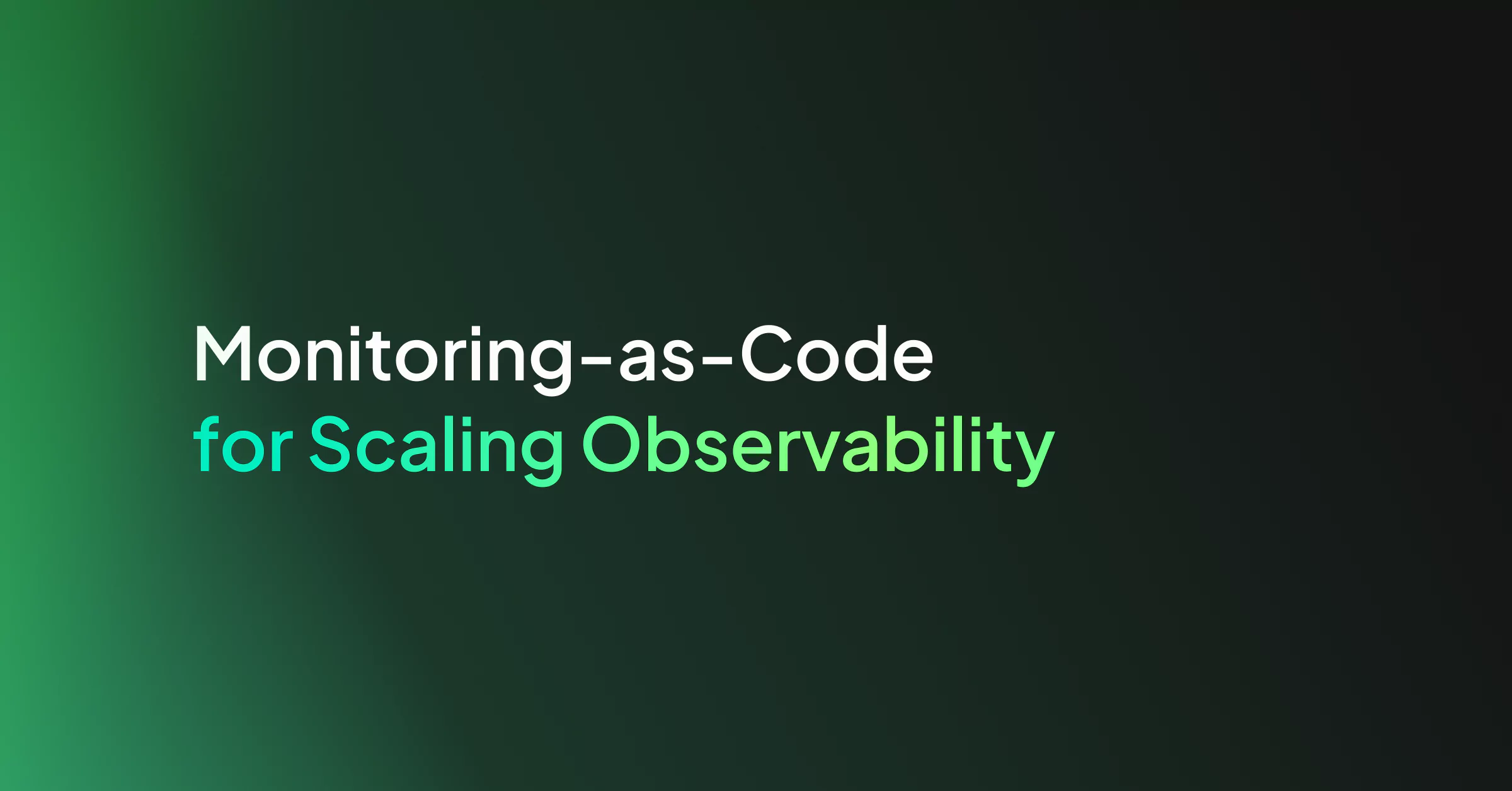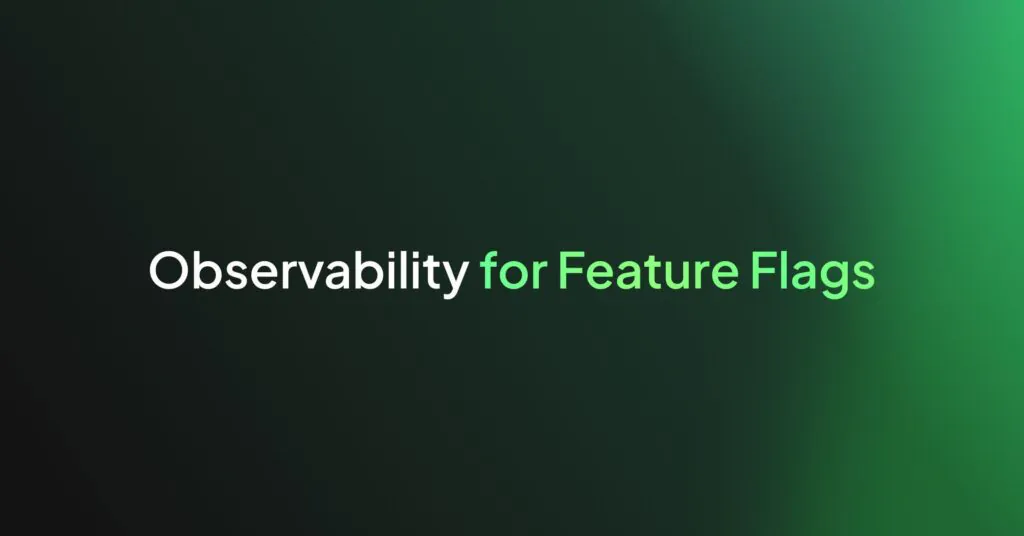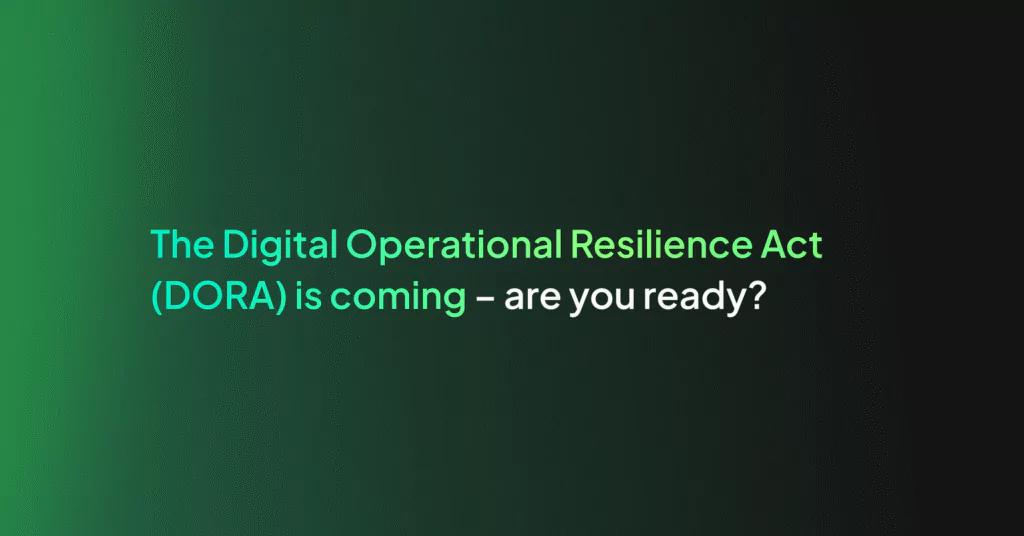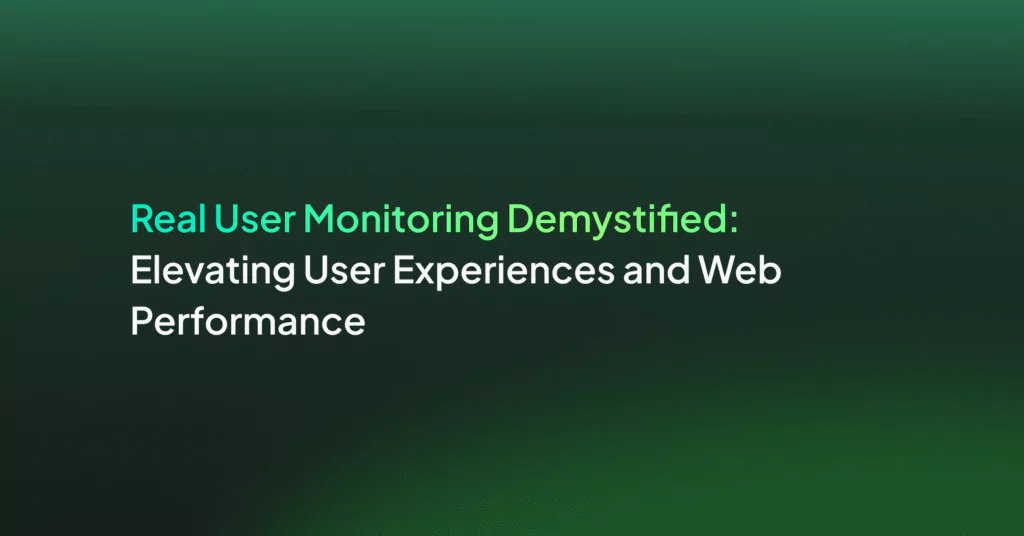Monitoring-as-Code for Scaling Observability

Monitoring as Code, also called Observability as Code, is a method of automating the configuration of observability tools using code. It includes tasks like cloud resource provisioning, monitoring alerts, and creating dashboards and visualizations. The goal is to gain insights quickly and consistently, and to make it easier to identify and address potential issues.
As data volumes continue to grow and observability plays an ever-greater role in ensuring optimal website and application performance, responsibility for end-user experience is shifting left. This can create a messy situation with hundreds of R&D members from back-end engineers, front-end teams as well as DevOps and SREs, all shipping data and creating their own dashboards and alerts.
To help scale observability while maintaining consistency, modern DevOps practices have evolved, extending the principles of IaC (Infrastructure-as-Code) to encompass observability and data management with what is now called Observability as Code or Monitoring-as-Code (MaC).
Use cases of Observability as Code
Observability as code is useful for the following tasks:
- Automated cloud provisioning for monitoring infrastructure: Automated cloud resource provisioning involves using code to set up and manage the infrastructure required for monitoring. This includes creating and configuring virtual machines, storage solutions, and network resources necessary for observability tools to function, ensuring monitoring infrastructure is scalable and quickly deployable across different environments.
- Setting up alerts: Defining monitoring rules and alert thresholds programmatically. This ensures that alerts are consistent across different environments and applications. Code-based alerts can also be version controlled, allowing teams to track changes and revert to previous configurations if necessary.
- Creating dashboards and visualizations: Teams can use code to define the layout, data sources, and visualization types (e.g., graphs, charts, heatmaps) programmatically. This ensures that dashboards are consistent and easily replicable across different environments and teams. It also allows for version control, making it easier to update and manage visualizations as the underlying data or requirements change.
A bit of background: What is Infrastructure-as-Code?
Infrastructure as Code marked a pivotal shift from traditional, manual infrastructure management to a modern, automated approach. Initially, IT infrastructure—comprising servers, networks, and other hardware—was set up and managed manually. This process was time-consuming and prone to human error and inconsistencies across environments.
The advent of cloud computing, distributed systems, and microservices, demands for faster time to market, and the resulting shift to faster development and deployments all helped create the need for a more controlled and efficient way to manage the underlying cloud infrastructure.
Closer collaboration between development and operations teams, aka DevOps, was also becoming the standard and drove the widespread adoption of IaC.
Infrastructure as Code quickly became the best practice for managing and provisioning infrastructure through machine-readable definition files, rather than physical hardware configuration or interactive configuration tools. By codifying infrastructure, IaC enables consistent and automated deployment, scaling, and management of infrastructure resources. This ensures that despite there often being many cooks in the kitchen, nothing gets burned.
Some of the leading players in the IaC space include Hashicorp Terraform, AWS Cloudformation, Microsoft Azure Resource Manager, Google Cloud Deployment Manager, and many others.
The stage is set for Monitoring as Code
With these foundational elements of IaC in place, Monitoring as Code emerged as the practice of managing and configuring observability through code. Similar to IaC, where infrastructure is provisioned and managed through code, MaC involves defining monitoring rules, alerts, and dashboards as code. This approach facilitates consistency, scalability, and version control in observability strategies.
Some of the key components of MaC include:
- Configuration Files
MaC uses configuration files to define monitoring parameters, thresholds, and alerts. These files are typically written in a domain-specific language or standard formats like YAML or JSON. - Version Control
The configuration files are stored in version control systems, enabling tracking of changes, collaboration, and historical analysis. - Automation Tools
Automation is central to MaC. Tools that support MaC automate the deployment and updating of monitoring configurations across various environments.
Monitoring as Code is critical for enterprises and startups alike
From startups to enterprises, the amount of data being generated and the number of people involved in monitoring it all is dizzying. In larger organizations, hundreds of employees might be creating alerts and dashboards, making an organized management approach critical. Let’s look at some of the benefits.
Consistency and standardization
By codifying monitoring configurations, MaC ensures that monitoring practices are consistent across different environments and applications. This uniformity is crucial for reliability and predictability in operational practices.
Scalability
MaC allows for easier scaling of monitoring solutions. As infrastructure grows, monitoring can be scaled programmatically to cover new services and systems.
Rapid deployment and recovery
Changes in monitoring configurations can be rolled out quickly and uniformly. Similarly, in case of errors, previous versions of configurations can be restored swiftly.
Improved collaboration and visibility
MaC fosters collaboration among development, operations, and QA teams. Monitoring configurations stored as code make it easier for teams to understand and contribute to monitoring practices.
Automation of repetitive tasks
Manual setup and updates of monitoring tools are time-consuming and error-prone. MaC automates these tasks, freeing up valuable resources for other critical functions.
Cost management
MaC allows for precise control over which data is ingested and managing data quota allocations for different teams, infrastructure, and applications.
Implementing Monitoring as Code with Coralogix
As a full-stack observability platform, Coralogix makes it easy to manage all aspects of observability programmatically via API, Terraform, or Kubernetes Operator.
- Coralogix API
Enables programmatic manipulation of resources, offering flexibility and automation in monitoring configurations. This includes any custom scripts, tools, or processes that can be connected to Coralogix via the API. - Coralogix Terraform Provider
Allows users to define and manage their monitoring infrastructure as code, integrating seamlessly with their existing Terraform workflows. - Coralogix Kubernetes Operator
Streamlines and automates the deployment and management of Coralogix monitoring resources within Kubernetes environments.
Monitoring as Code use case
One Coralogix customer discovered that Coralogix facilitated a whole new dimension of efficiency in managing their observability practice. With over 500 members in their R&D team using Coralogix (including DevOps, CloudOps, SRE, and software development teams), they needed a scalable and secure way to allow everyone to monitor relevant data.
Operational Efficiency
Using the Coralogix Terraform Provider, this customer could adopt a MaC approach so all configurations of Coralogix alerts, dashboards, data quota allocations, and more are defined in code, rather than being set up manually through the UI. For example, the back-end teams can create their own alerts and dashboards to monitor the performance of their respective applications as they move from the dev environment to QA and finally to production. Likewise, the operational teams can do the same for infrastructure logs and other areas they monitor.
With Coralogix, their monitoring is completely templatized, so any team can modify any of their over 200 alerts by simply using code. With full CICD integration, they can also enforce a GitOps model to establish controls and audit what everyone is doing within their system.
Cost Optimization
Coralogix’s TCO optimization provides the ability to determine and update exactly which logs and traces are sent to hot storage and which to archive. Using the Terraform Provider, this customer took a MaC approach to declare data allocation and quota rules via code.
This allows them to consistently reduce their observability costs by 60% and avoid expensive overages and data blocking.
Summary
In summary, Monitoring as Code is an integral part of modern DevOps practices, bringing agility, efficiency, and precision to the monitoring and management of infrastructure, websites, and applications. By leveraging MaC, organizations can ensure robust, scalable, and responsive monitoring systems, crucial for maintaining high performance and ensuring customer satisfaction.




